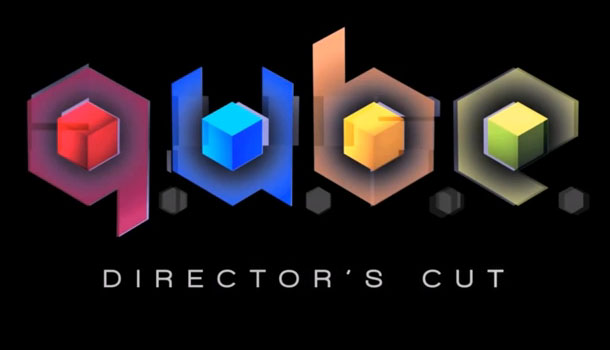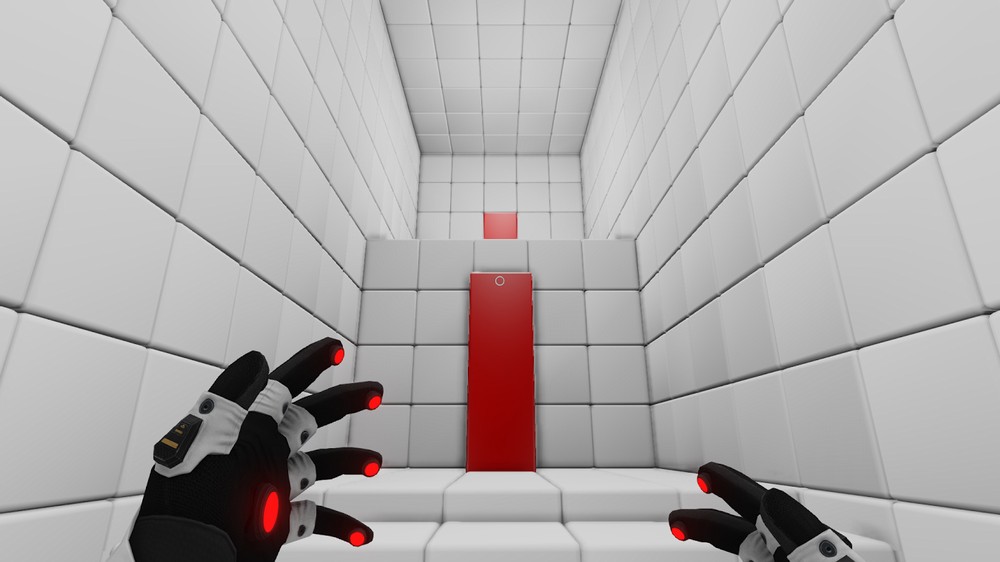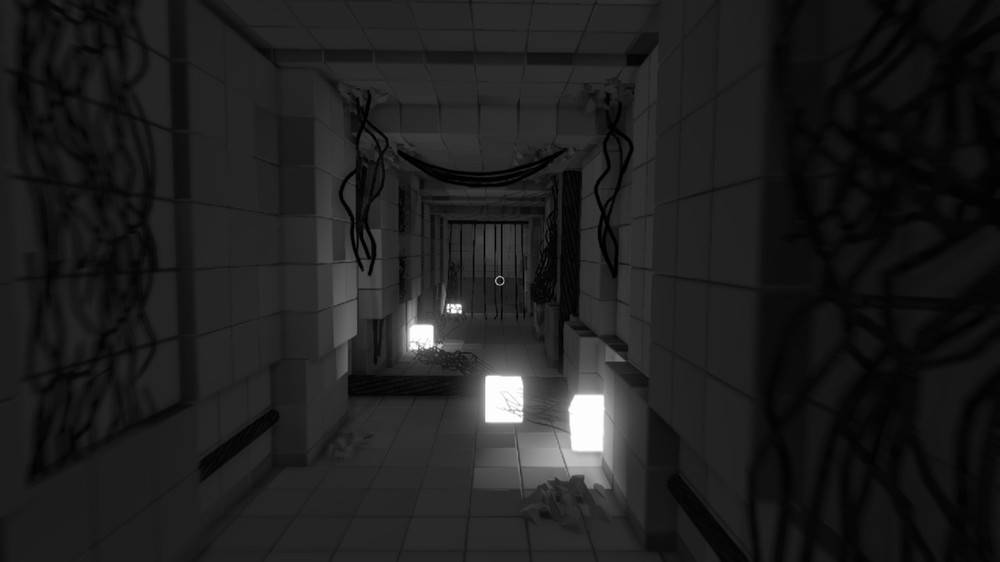Q.U.B.E., which stands for Quick Understanding of Block Extrusion, was first released on PC at the tail end of 2011, and has now been re-released as a Director’s Cut edition on current-gen consoles that adds story elements to the game. Quick glances will see the game compared to the Portal series, but for me, a better comparison would be the present-day Desmond sections in Assassin’s Creed: Revelations, where manipulation and placement of blocks was key.
Q.U.B.E. starts in a white room, with a female voice telling you that you’ve been out of contact for 15 days, you’re inside a cube hurtling towards Earth, and that you’re the last hope for preventing global catastrophe. This voice eventually turns out to belong to Commander Novak on board the International Space Station, who can only contact you when the ISS is within range of the cube that you’re in. By progressing through the cube and solving puzzles, you’re told that you will dismantle the cube from the inside, removing the threat to Earth. However, a mysterious other voice soon finds its way to your ears, telling you that all may not be as it seems. Having not played the original version of Q.U.B.E., it wasn’t until after I’d finished the game that I realized the narrative portions are new to the Director’s Cut, and I must admit that I’m surprised at how natural they felt, as if they had been in the game since the beginning.
The cube in Q.U.B.E. is broken down into sectors, each of which will teach you a new puzzle mechanic, and will give you multiple opportunities to test your understanding of said mechanics. Though each sector has a slightly different focus, every puzzle revolves around manipulating blocks of different colors, each of which has a particular function. Blue blocks, for example, can be used as a spring pad, while purple blocks rotate a particular section of a room. There are five different types of block, and by the end of the game you will be using them all in unison in order to solve puzzles. Blocks are activated and deactivated by using the L2 and R2 buttons, though I must admit that on some of the time-reliant puzzles, both of these inputs, as well as the aiming mechanics, weren’t quite responsive enough to avoid unnecessary frustration.
Though the story and over-arching mystery may be what drives players to solve puzzles and complete the game, it’s nice to know that the difficulty curve throughout Q.U.B.E. is expertly balanced and never feels unfair. I never experienced a section where I felt as though I hadn’t been shown how to solve a puzzle or that a leap of logic was necessary. With a bit of forethought and planning, as well as relying on what I’d already done, each puzzle within Q.U.B.E. is solvable without consulting a guide. That isn’t to say I didn’t get stumped, as some of the later puzzles are particularly tricky, but I never felt as though the game had taken an unannounced step ahead in difficulty.
The one downside of having such an expertly managed difficulty curve is the length of the game, as it’s especially tough to manage difficulty over a longer experience. My time with Q.U.B.E. clocked in at about five hours, and though there are secret puzzles to find and a time-attack mode, there isn’t much reason to play through the main game a second time once you’ve already solved the puzzles. There doesn’t seem to be a Portal-style secondary narrative here, but if there is one, it’s especially well hidden.
Though reasonably short, Q.U.B.E: Director’s Cut offers an excellent slice of puzzle gameplay, with a solid story that provides players with a good reason to muddle through puzzles they may find especially difficult. The narrative will keep you guessing to the very end, and the visual, while initially sparse, vary enough from sector to sector to keep your eyes as attentive as your brain. If you enjoy having your mental fortitude tested, or just enjoy an intriguing story and don’t mind working your brain, Q.U.B.E: Director’s cut is an excellent option for a few hours worth of entertainment.
















